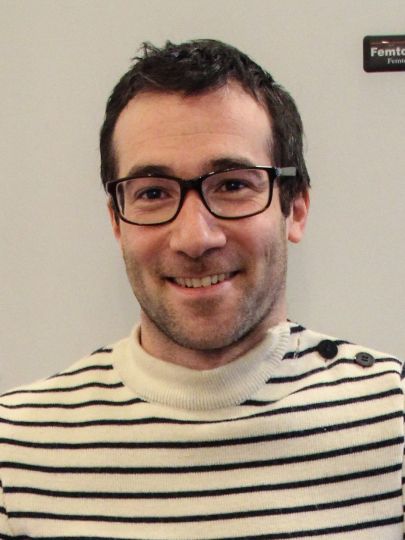Brice BathellierInstitut des neuroscience Paris-Saclay (NeuroPSI) - CNRS / Paris Sud
Mes recherches
J’étudie, chez la souris, les bases neurophysiologiques de la perception sensorielle. Doté d’un master de physique et d’un doctorat en neurosciences de l’EPFL (prix 2008 de la meilleure thèse de la Société française des neurosciences), je suis recruté au CNRS en 2013 dans l’Unité Neurosciences, Information et Complexité (UNIC), à Gif-sur-Yvette avec le soutien du programme ATIP-Avenir. Le but de mes recherches : comprendre comment les circuits neuronaux intègrent de multiples informations sensorielles, notamment sonores, et comment ce processus génère une perception unifiée. L’originalité de ma démarche réside dans la recherche de caractéristiques non-linéaires - peu étudiées jusqu’alors - qui permettent de coder, autrement dit de convertir en signaux nerveux, des stimuli complexes. En s’appuyant sur une approche qui combine notamment des enregistrements à large échelle de l’activité des réseaux neuronaux, de l’optogénétique, des tests comportementaux chez l’animal et la modélisation, mon équipe a mis en évidence un certain nombre de principes de codage (codage par assemblées neuronales, réponses asymétriques pour des sons inversés temporellement) fondamentaux pour la reconnaissance et la perception des sons, et poursuit cette exploration.
Mon projet ATIP-Avenir
Multisensory processing in cortical networks underlying the formation of perceptual objects
The neocortex is the circuit that occupies the largest volume of the human brain and is unanimously recognized as essential for higher cognitive abilities. However, the computational principles implemented by cortical circuits are still poorly understood. The cortex is particularly important for the extraction of relevant objects or categories from sensory inputs, independent of the modality, an ability that is very inefficiently reproduced in artificial systems. I here propose to study the mechanims by which cortical circuits combine information from different sensory modalities to recognize behaviorally relevant objects. The anatomical architecture of the cortex which shows diverse and extensive connectivity between its different areas suggests that it implements more complex computational schemes than the classically proposed sequential extraction of increasingly complex features. In particular, a number of studies show that primary sensory cortical areas are already interconnected, but the computational role of these heteromodal connections is unknown. The goal of my research project is to test whether heteromodal interactions act to bias the neuronal representation of a stimulus in primary sensory cortical areas in order to foster the emergence of perceptually stable objects. The study will be carried out in awake behaving rodents discriminating two multimodal objects having unimodal ambiguities. Modern large scale recording techniques including two-photon calcium imaging and multisite electrode recordings will be combined to modern neural population analyses techniques to quantitatively monitor the encoding and classification of the multisensory cues in primary sensory cortical areas. I will also explore mechanisms underlying these interactions using targeted cortical stimulation by optogenetics. I thereby expect to derive novel computational principles by which brain circuits infer from available cues the identity of encountered objects.
Brice Bathellier est également lauréat ERC Consolidator Grant 2017
